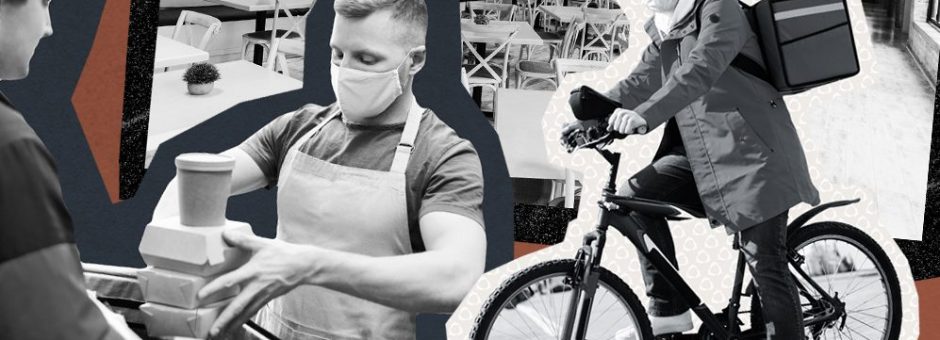It’s possible that there is no more tumultuous moment for a business than when it’s in the midst of executive succession planning —and this is the case in two senses. Businesses in the midst of this process are uniquely unsteady, faced first with the realities of installing an executive who may well seek to reshape the values of the business. Second, they are increasingly faced with the need for highly specific expertise as new technologies become integrated into everyday operations. There is a striking emphasis on new hard skills and no industry is untouched.1 This shrinks the pool of competitive candidates down to a small, highly sought-after group.
This landscape is only further complicated by COVID-19. As restaurants begin to reopen, so too do their third party corollaries, now governed by our new shared reality. This reality is an uncertain one, but businesses must nonetheless push forward to ensure their own longevity.
Third Party Delivery Services
Take, for example, the quaternary industries that include food services and accommodation or hospitality. Already subject to the whims of social media which plunge businesses into the uncertain waters of public opinion, businesses have also had to accommodate the surge of third party delivery services in recent years. When considering the succession plans for a food service business, executive teams must ensure the installation of high calibre leaders that boast experience working within these dynamic, unprecedented markets. Companies like Doordash, Skip The Dishes and Foodora, or Airbnb, VRBO and even Expedia, have altered the way businesses must approach financial and business planning—and in the long term, the succession planning process.
Integrating Technology
In this context, why is succession planning so important? In short, smart succession planning is imperative because these services have fundamentally changed how food service and accommodation businesses must be operated. Third-party delivery services, on the surface, promise more convenience for customers and more profits for restaurants. By offering an ultimate convenience (ordering online, order tracking, paying online) to customers, well designed third-party delivery services have begun to corner the delivery market. In fact, Restaurant Business reports that “21% of consumers say they are increasingly replacing carryout orders with delivery orders. That’s even higher—30%—for those 18-34 years old.”2 In addition, 36% of respondent customers “say they order from restaurants about the same amount, but are replacing some dine-in/carryout with delivery.”2 A Zion & Zion study reported that “almost two-thirds (63%) of adults 18 to 29 years old have used a multi-restaurant delivery website or app service in the past 90 days, followed by 51% for those 30 to 44 years old, 29% for those 45 to 60, and just 14% for those 60 and over.”3 Consequently, restaurants and hospitality chains are all but forced to join such platforms—proffering greater profit margins for those skilled enough to implement such new systems with tact and strategy.
Succession Planning for Tech-Savvy Restaurants
This is because platforms like Skip The Dishes or Doordash also create challenges for the businesses that use them. In addition to a business’s own social media, they present a new site for customers to rank and rate their food as it is delivered, and a low ranking exposes the business to potential financial losses. On top of this risk, third party delivery services take a cut from every order placed or booking made, forcing restaurants to increase their normal menu prices to make up the loss. Uber Eats, for example, charges up to 30% of the final check for every order placed using its service.4 This cost is unmanageable for many small businesses or restaurants operating with a very small profit margin.
Beyond managing the intricacies of business financial projections given these new market players, the saturation of the third party delivery market must also be taken into consideration. Competing platforms split the market, forcing businesses to either bet on which platform will create the most profit, or join several and absorb costs which may not yield a proportional uptick in orders. In these cases, despite all of the benefits that can come with third party delivery services, they may not be right for every business. These are hard decisions that require extensive knowledge of market trends, business profit margins and customer preferences in order to successfully cement a businesses’ viability.
Balancing Tradition with Tech
Discussing the financial concerns of implementing third party delivery services—or not—does not begin to address the emotional or traditional attitudes within a given food service or accommodation business. When reticence to embrace a new technology—which effectively eliminates much of the social, human aspects of going out for dinner—is taken into consideration in addition to the downsides of possible profit loss, both internal and external candidates marked in succession planning must be ready to guide the business with care through these difficult economic choices while maintaining the spirit of the business. This is especially so when cementing a family-run legacy. As such, transitions today need to be able to evaluate the rapidly changing marketing landscape with the effective financial modeling and accounting plans that are crucial to understanding the right next step. This consideration is essential when undertaking executive succession planning moving into the new decade.
Cited Sources
1 Goldbeck, Henry. “Robotics and Manufacturing: Addressing the Skills Gap.” Goldbeck Recruiting, January 20, 2020. https://www.goldbeck.com/expertise/engineering-skilled-trades/robotics-and-manufacturing-addressing-the-skills-gap/.
2 Sara Rush Wirth. “What Consumers Want from Off-Premise.” Restaurant Business. Accessed March 18, 2020. https://www.restaurantbusinessonline.com/operations/what-consumers-want-premise.
3 Hospitality Technology. “63% of Young Adults Use Third-Party Delivery Apps: Study.” Accessed March 18, 2020. https://hospitalitytech.com/63-young-adults-use-third-party-delivery-apps-study.
4 Skift Table. “Smaller Restaurants Grapple With the Burden of Delivery Service Fees,” February 28, 2019. https://table.skift.com/2019/02/28/smaller-restaurants-grapple-with-the-burden-of-delivery-service-fees/.

